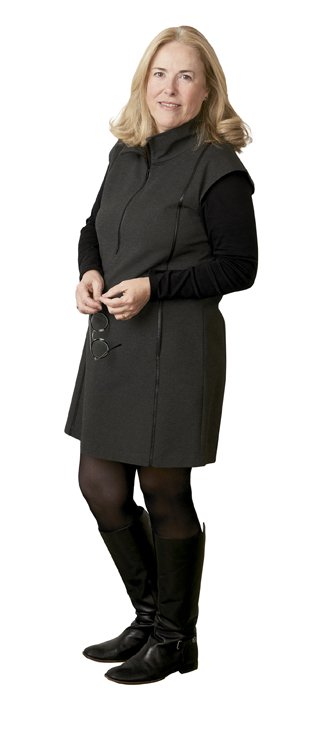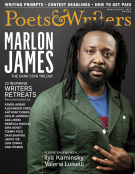This spring, after twenty-two years as the executive director of the MacDowell Colony, one of the nation’s most prestigious residency programs for writers and artists, Cheryl A. Young will retire. Having joined the nonprofit arts colony in 1988 as its director of development, Young was named its leader in 1997 and oversaw MacDowell through a time of notable growth. During her time at the colony, the organization’s net assets increased from $5 million to $44 million, and the number of annual residencies at the colony, located in Peterborough, New Hampshire, rose by 35 percent. Last July the organization opened a new office and gallery space in New York City to showcase the work of past residents and expand its reach. With the search for her successor underway, Young spoke about her tenure at MacDowell and the future of the colony.

Cheryl A. Young (Credit: Tony Gale)
What are you most proud of achieving during your tenure at MacDowell?
I’m really pleased with the number of people we’ve been able to help. We expanded into other disciplines more robustly, so film and theater are now a much bigger part of the program. I’m also really proud of the journalism initiative [that funds residencies for journalists], since we started working on that before this era of, let’s say, less respect for journalists. That work will make a huge difference, because their work will reach millions of people—and that can change policy. We’ve also been able to increase our financial aid and the number of residencies—we are able to take people whose work is not as present in the art world as it should be. About a third of the fellowships are for artists of color.
What is ahead for MacDowell?
Most of the ideas that are floating around have to do with removing barriers so people can participate in the arts and with making sure that people understand what happens at residencies. Nationally, MacDowell would like to be more visible as a supporter of the arts and to make sure that people understand that they’re welcome. So there’s a lot of work to do with people who don’t know about residency programs because they either don’t have artists in the family or didn’t go to graduate school. When the colony was starting in 1907, schoolchildren knew who Edward MacDowell—who founded the colony with his wife, Marian MacDowell—was as a composer, because music was part of schools’ curriculums. There were children’s books about him. And then Mrs. MacDowell took over the colony and went across the country raising funds through women’s groups and music clubs, and it was a more grassroots effort. I think that grassroots aspect, which starts in the schools and goes up through the first dozen years of what kids learn about the arts, is kind of critical. So it’s a challenge now. People who are participating in the arts understand [the importance of residencies], but there are a lot of people who are not participating in the arts. There’s definitely a diversity gap in terms of who participates, which means that if your family didn’t have trips to the library or go to live performances of music or go to museums, it really is all a mystery as to why and how to become an artist. There’s a lot of work to do that way. Our mission is written very broadly, and there are some things we can do visibility-wise that have to do with just saying: Living artists need support. So we’ve always been out front with that. That’s how the colony was built. We didn’t have an endowment. Mrs. MacDowell just went out and raised funds. And did it by going basically door-to-door, saying, America needs a place for its artists.
Has the MacDowell residency model changed much since its inception?
We try to support all different disciplines—that’s a core value, because artists have something to say to one another regardless of how they’re making—and we try to [maintain] the retreat aspect, which is: Remove all interruptions and let a person—without pressure from the marketplace—sit down and do something without anyone saying no. Not their agent, not their spouse or partner—just all yes. It’s all about yes. That hasn’t changed at all. The big difference that I see is that the residency field has grown enormously. When I started there were about eighteen programs and very few international ones, most of them run by American foundations. Now there are thousands all over the world. There are also more artists than ever before—in some ways it’s the best of times. But if you look at the U.S. census, there are around a million creative artists, and there are less than ten thousand residencies, so that means one out of a hundred is going to able to go to a residency. Artists are some of the most highly trained people, but the support for them is not commensurate with their skill level. You need residencies. There’s no way to support the arts economy without them. And everyone would be a lot worse off if we didn’t have residencies helping to support artists. Half the people who go to MacDowell make less than twenty thousand dollars a year; they’re right at the poverty line.
What is your idea of a healthy arts culture?
In order for artists to thrive and an arts culture to thrive, you need a society that values art. That can only happen if art becomes part of people’s lives and value systems early on. And then you need leadership that reinforces it. The National Endowment for the Arts (NEA) is incredibly important [in that respect]; when it was created the whole point was that the country deserves great art, and we should set an example by supporting it and directing people’s gaze toward art that’s new and wonderful and part of our history. And the third thing you need is the opportunity for everybody to participate and develop their talents and contribute—that comes from encouragement and scholarships, removing barriers, and making sure people value and respect artists, so that people will want to become artists.
Will people still want to become journalists if they think they’re all muckrakers? We’ve been through this before—if you study journalism history, there was a time when people were writing junk, and then we cleaned up the journalism that was out there and set standards and ethics. People really [started to] respect journalists. But because the leadership has changed, there’s a real danger that we’ll lose that. And I think that’s true of art, too. During the period when the NEA was told it was supporting blasphemous work and artists couldn’t possibly be contributing to society, we retreated from our education and arts funding. We survived it, the NEA survived it, but we’re definitely feeling the effects of it in how people view art. And now it’s starting to come back a little bit with this generation and the creative economy and all the conversations about what makes the quality of life better and how art plays into that. I think that opportunity is really important at this point because kids aren’t getting enough education about art in schools. So we’re going to have to figure out a way to retrofit that.
How do we encourage a respect for art in kids?
They need to have some happy memories—even if it isn’t from their parents. If you read about Baldwin, he didn’t have that much support at home, but he went into the library every day and read every book in the library. He did have some support, but it wasn’t like he had a role model specifically telling him he was going to be a great writer. And I think that can happen with so many people. I informally ask our artists in residency, “Were your parents artists?” Or “How did you decide to do this?” Because this is not an easy life. I get all different answers. Some say, “My uncle was a writer,” or “My grandfather was an architect.” Sometimes there’s a role model there. But sometimes there isn’t—in my family there was no role model whatsoever and my parents said, Are you kidding? How are you going to support yourself unless you marry someone? Nowadays that’s an unlikely answer—you wouldn’t expect someone to answer that they’re going to support themselves by getting married—but you still wouldn’t necessarily be able to give a better answer about [how you’ll make money]. That hasn’t changed. It’s still not good. In the sixties we posted a survey in the Saturday Evening Post about what it was like to be an artist, and we recently did the same survey, and it’s not changed. The number of hours artists spend on their art and their income—it’s not really changed, except maybe that student debt has increased.
What is next for you?
I am going to rest and truly retire for a few years—I have no burning desire to start a new career. What I’d like to do is volunteer my time to the same kinds of things I’ve been doing at MacDowell—work to help artists, work on equity—and do some traveling and other things one normally does when unfettered and alive. The parts I’ll miss are all the wonderful people here and the artists. I’m just hoping I can stay connected in other ways—being in the audience or writing notes to artists after I see something wonderful that they’ve done. I’ve always loved that part.
Dana Isokawa is the associate editor of Poets & Writers Magazine.








